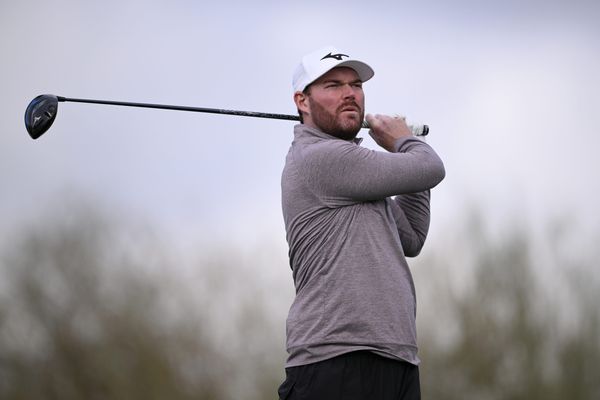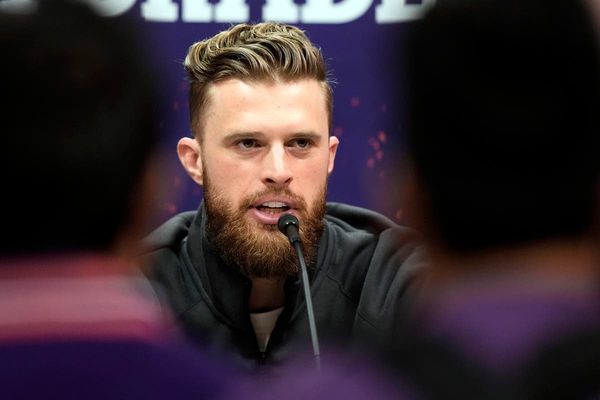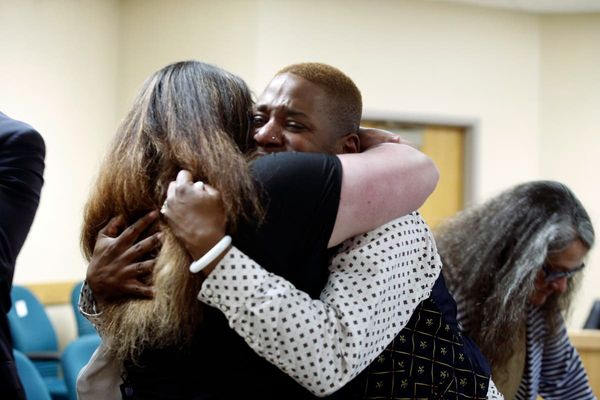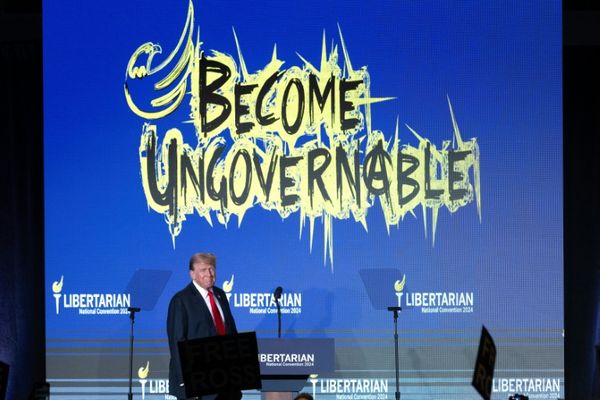It's not every day you're hailed as Miss Universe as you motor into a village perched on stilts in the middle of the pirated Sulu Sea, or you dive for cover as an Israeli fighter jet roars overhead, only to be asked by the Hezbollah fighter lying next to you if you know his cousin in Melbourne.
For nearly six years as a full-time reporter on Foreign Correspondent, and another 18 years as a contributor, the program was my passport to places and experiences I could not have imagined.
However, it was the people I met along the way who made the deepest impression; who still come to me in my dreams or surprise me at odd times during my waking hours. Not world leaders or celebrities but so-called "ordinary people", like Choum Nap.
An aunt's brutal choice
It was early 1993, and Cambodians who had fled to neighbouring Thailand to escape a bitter guerrilla war were being bussed home under the terms of a United Nations-brokered peace accord.
After 14 years, the last border camps were being closed and the rush was on to get refugees back home and registered ahead of elections in May. Returnees were promised land and safety — two things which don't go together in a country studded with landmines.
My Foreign Correspondent colleagues and I had driven from the city of Battambang, in north-western Cambodia, to a farming village of returnees. Our police escort wouldn't accompany us the whole way because Khmer Rouge fighters were still active in the area. They also feared the road had been laid with anti-tank mines which our four-wheel drive might trigger — but not a person, they assured us. Hardly encouraging.
Nevertheless, as a crew, we made the unanimous decision to continue, walking the last kilometre to the village, single file, following exactly in the footsteps of local guides.
We were filming families hoeing a small communal vegetable plot when we got word of a landmine explosion in the district. We headed for Battambang Provincial Hospital, although "hospital" was too grand a term for what we encountered.
Three boys lay on old metal trolleys in a bare room devoid of medical equipment — cousins who'd been working in the fields. One, with gaping leg and abdomen wounds, had died minutes after arriving. The other two, shredded by shrapnel, were variously moaning or screaming.
A nurse was using scissors to pick out bits of embedded metal from one boy, while two other hospital staff hovered helplessly nearby.
I noticed a pint-sized woman in a bright pink top, flitting out from the corner of the room in horrified disbelief to lay a hand on the boys, then returning, like a flycatcher, to the same spot, only to do it all again. She was the boys' aunt, Choum Nap.
As I watched, one of the boys sighed, lifted a bloodied leg that didn't seem connected to his body, and rolled onto his side. And that's when I went into shock.
It was as if someone was turning down the sound until I couldn't hear anything. The colour drained from my vision, from top to bottom, until I was seeing only in black and white. Time stopped.
I became aware that the producer, Dugald Maudsley, was talking to me. I could see his mouth moving, "… outside. Would you like to go outside?" he was asking, as I gradually regained my senses.
On the verandah, Choum Nap made a beeline for me. She attached herself as if her life depended upon it. Whether for my comfort or hers, I don't know. I'm not tall, but she was so tiny I had to bend over to rest my chin on the top of her head as she burrowed into my chest. "I don't know if they'll live," she said, our fixer translating.
Her family had no money for blood transfusions or medicine. We offered to give blood, buy drugs — whatever was needed. Choum Nap said it was best to give her money. She knew where to go in the market. Medical staff agreed.
We returned the next day to see how the boys were faring. Only one was still alive, an uncle by his bedside. The man launched into a stinging rebuke. Why hadn't we bought medicines as we said we would?
We explained that we'd given the money to the aunt for the drugs. He couldn't believe our stupidity. Choum Nap, he said, had used the money to buy funeral supplies and food.
Disbelief. Anger. Betrayal. Sorrow. I was awash with feelings. How could someone give up on the living to invest in the dead?
However, Choum Nap was thinking of the living. She was weighing the odds. And it wasn't a safe bet that the boys would survive, even with medical help. Who was I to judge where the money would best be spent?
Love and life sometimes require brutal choices, particularly when you are poor.
A doctor radiating benevolence
A decade later, I found myself back in a hospital for Foreign Correspondent, again surrounded by people needing life-saving surgery. This time, however, it was a good-news story about Indian cardiac surgeon and champion for the poor, Dr Devi Prasad Shetty.
Hero worship has never been my thing, but I came dangerously close to it on that shoot in Bangalore in 2003.
"Apparently, it can take him hours to do his rounds because patients revere him as a god or saint and want to bow down and touch his feet," I said to fellow crew members as we waited to meet Dr Shetty in his hospital office. "And Devi does mean divine, you know."
"I'm sure he's a wonderful human being but he's not the Messiah," quipped the cameraman. We laughed at the Monty Python reference. But when a tall, smiling Dr Shetty appeared at the door in his scrubs, we were awe-struck. Hard-bitten cameraman included.
"So this is an aura," I remember thinking. Dr Shetty radiated benevolence. You couldn't help but instantly feel loved, safe and, well … blessed, in his presence.
His Bollywood good looks didn't hurt, of course, but there wasn't a hint of hubris. Just quiet strength and humility. His inspiration, he said, came from a former patient: Mother Teresa.
Dr Shetty established his state-of-the-art hospital in 2000 to provide high-quality, affordable cardiac care for the masses, from the wealthiest to the poorest.
By the time we rolled up three years later, he and his team had already performed 17,000 life-saving operations, half of them for free, or heavily subsidised by the hospital's charitable trust.
"I am doing exactly what I am supposed to do but people consider that it's a generosity and it's a charity," Dr Shetty told us. "I am just doing my duty as any other individual but, unfortunately, overall, society is degraded to such a level that just being a normal human being is considered godly."
In the 20 years since our visit, Dr Shetty has been recognised with national and international awards. His Narayana Health has grown from that 225-bed hospital in Bangalore to a 5,800-bed operation spread across nearly 50, multi-specialty hospitals and health centres in India, and an international hospital in the Cayman Islands.
Dr Shetty is as determined as ever to take his model worldwide, to the 92 per cent of people globally who still have no access to cardiac care. His vision and tireless work have improved the lives of hundreds of thousands of people: not just his patients, but their families, too.
Finding the good amid wrenching tragedy
It would be easy to feel inadequate on a scorecard of achievements. But a poor West African farming family in Burkino Faso taught me that we can all make a powerful difference through a life well lived.
I first met Agirata, Mahmoudou and their daughter Balkissa Sowodogo in 1995 near Kaya, a provincial city on the dusty, grassed plains of Burkina Faso.
We were doing a story on the government's push to end the barbaric practice of female genital mutilation (FGM), the ritualistic removal of part or all of a girl's external genitalia.
There are no health benefits from FGM, only dire health problems and an increased risk of death for a mother and baby during birth.
But this deeply ingrained custom was believed to ensure a girl's purity and fertility and to eschew it meant social exclusion — no husband, no land, no future. Once again, life and love throwing up brutal choices.
In advance of the crew, I had headed out to a village where health workers planned to show a film about the dangers of FGM.
I wanted to find a family willing to talk to us about the issue, before and after the screening. Agirata and her husband Mahmoudou agreed.
I'd come across Agirata grinding maize on a large flat rock in a compound ringed by small, circular, clay-brick houses with thatched conical roofs. Next to her was her tiny, doll-like daughter, Balkissa, in a white dress with red frills. At five years old, she was soon to undergo FGM — or excision as it was known there.
I met Agirata's husband, Mahmoudou, and their young son. We talked about the story, and arranged to film two days later.
Returning with the rest of the crew, we drove into the village past a large tree where Mahmoudou had just finished shovelling fresh earth onto a newly made garden bed. We did the interview, shot village life and then the evening film screening under the stars.
Agirata and Mahmoudou were shocked by the dramatic portrayal of a girl dying from blood loss after FGM. They vowed never to have Balkissa excised.
I sometimes wonder whether they were able to hold the line. Nevertheless, it was a powerful story. But it's what happened off-screen afterwards that left me speechless.
The following day we visited the family, taking a bag of rice to say thank you. Agirata and Mahmoudou expressed their gratitude, then Mahmoudou asked if he could share something with us and gestured for us to sit.
"You remember when you came to the village to take your pictures, I was standing by the tree," he said. "We had just buried our son."
The shovel. The fresh soil. It was no garden plot. It was actually a grave. Their son's grave. I felt sick. We'd spent that day asking these grieving parents questions, getting them to repeat actions for different camera angles, and they'd just buried their son.
We'd had no idea. I apologised profusely and said that, had we had known, we would never have continued with the filming.
But Mahmoudou said that he and Agirata had discussed this. They had decided that nothing good could come from their son's death, but that maybe something good could come from our visit. And it did, he said.
They were no longer going to risk their daughter's life with excision. Besides, he added, we had travelled a long way from Australia and they had given their word.
Such strength, dignity and grace. Such courage.
I'm still floored, every time I think about it, particularly since becoming a mother. When I am tempted to wallow in self-pity, I remember Agirata and Mahmoudou and try to reset my gaze on the future.
For 30 years, Foreign Correspondent has been Australia's window on the world, helping us to understand other people's lives and, through that, more successfully navigate our own way, as individuals and a nation. It's a gift. Long may it keep giving.
Dominique Schwartz was a founding reporter for Foreign Correspondent when the program launched in 1992.
Watch Foreign Correspondent's one-hour 30th Anniversary special tonight at 8pm on ABC TV and iview.







